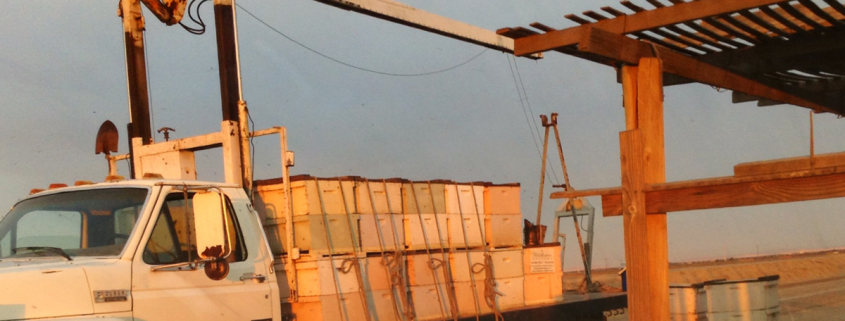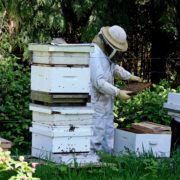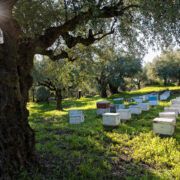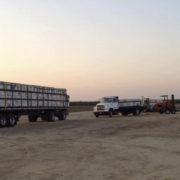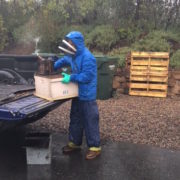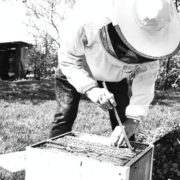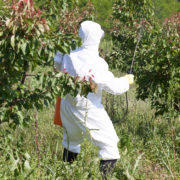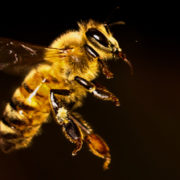Relocating Beehives
Unlike many insects – and many other animals for that matter – bees are able to relocate fairly easily. Likely, because they are naturally predisposed to swarm, honeybees can quickly adjust to a new location.
This year, because of the California drought, Wildflower Meadows’ bees were having a difficult time finding nectar and pollen to feed on in their usual locations. The plants had all turned brown and flowers were nowhere to be found. We decided to help some of our strong and hungry colonies by moving them a couple of hundred miles to an area with irrigated fields of alfalfa. While not the most nutritious bloom – alfalfa flowers are high in nectar, but low in pollen – alfalfa nectar is still far superior to no nectar. Surely enough, with the addition of pollen supplement patties, the bee colonies remained strong and added additional weight rapidly. Last week, it was time to move the colonies back to their original home, and prepare them for a new season of queen bee rearing.
Relocating beehives is a challenging operation. Beehives are heavy. Bee colonies need to be moved at night; and safety on the roads is a critical concern. It usually takes two strong individuals to lift a heavy double deep colony of bees. However, for moving this set of bees, we used a hydraulic boom loader, which allowed a single person to handle the job. The loader grabs the beehives by two cleats that are attached to the bottom deep hive body of the colony. Stacks of two beehives at a time are hoisted up on to a flatbed truck. The entrances are placed facing forward so that the bees receive ventilation while traveling. Finally, two heavy ropes secure each row. Before long, it was time to hit the road with a quarter of a million “ride sharing” insects!

